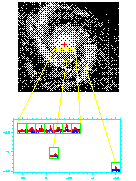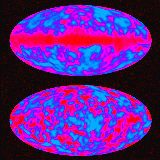What is Submillimeter Astrophysics?

|
Caltech Submillimeter Observatory Office, 111 Nowelo St., Hilo, Hawai'i 96720 Voice: (808) 935-1909 Fax: (808) 961-6273 |

|

|
Caltech Submillimeter Observatory Office, 111 Nowelo St., Hilo, Hawai'i 96720 Voice: (808) 935-1909 Fax: (808) 961-6273 |

|
 Molecular Clouds (like the Horsehead Nebula)
Molecular Clouds (like the Horsehead Nebula)

 Evolved stars & planetary nebulae (like The Ring Nebula, M-57)
Evolved stars & planetary nebulae (like The Ring Nebula, M-57)

 Galactic star-forming regions (such as Ultracompact HII Regions)
Galactic star-forming regions (such as Ultracompact HII Regions)

 External galaxies (as in the Whirlpool Galaxy, M51)
External galaxies (as in the Whirlpool Galaxy, M51)

 The Cosmic Microwave Background Radiation
The Cosmic Microwave Background Radiation

 Continuum emission: modified blackbody from cold dust
Continuum emission: modified blackbody from cold dust

 Spectral line emission: rotational transitions from molecular gas
(CO, CS, HCO+, H2O etc.) and fine-structure transitions from atomic species
(CI)
Spectral line emission: rotational transitions from molecular gas
(CO, CS, HCO+, H2O etc.) and fine-structure transitions from atomic species
(CI)

